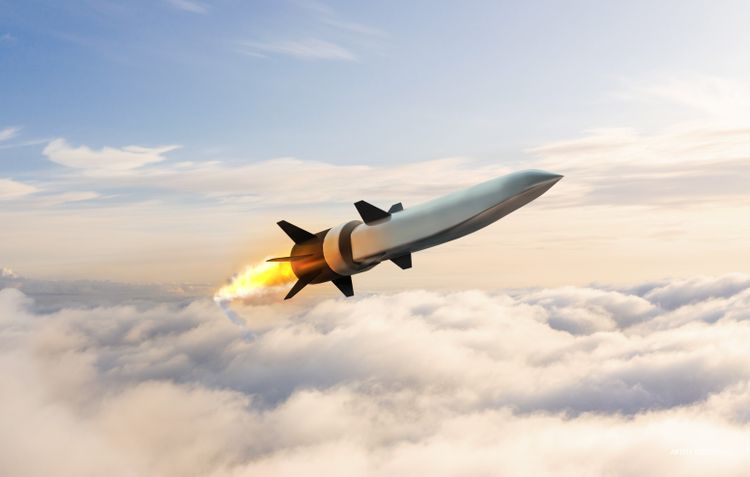
Raytheon Missiles & Defense, working with Northrop Grumman, recently successfully completed the first flight test of a scramjet-powered Hypersonic Air-breathing Weapon Concept (HAWC) missile for the Defense Advanced Research Projects Agency (DARPA) and the U.S. Air Force. The HAWC project’s goal is to develop affordable hypersonic cruise missiles that breathe air to feed its engine, enabling the weapon to be launched at a low altitude and closer to the target. It could be launched from several types of fighters, including the fifth-generation F-35 aircraft.
In the test, the HAWC missile was carried under the wings of an aircraft. Once released, a solid-rocket motor then propelled the weapon to supersonic speed, where the scramjet engine ignited and accelerated the missile, enabling it to reach hypersonic flight. The test validated the ability of HAWC’s airframe and propulsion system to reach and navigate at hypersonic speeds.
“This is a history-making moment, and this success paves the way for an affordable, long-range hypersonic system in the near term to strengthen national security,” said Colin Whelan, vice president of Advanced Technology at Raytheon Missiles & Defense. “This test proves we can deliver the first operational hypersonic scramjet, providing a significant increase in warfighting capabilities.”
The scramjet engine technology from Northrop Grumman works by compressing the air entering the missile at high speed before combustion to enable sustained flight at hypersonic speeds – five times the speed of sound.
“We have reached a milestone in delivering a game-changing capability to the warfighter,” said Dan Olson, vice president and general manager of the Weapon Systems Division for Northrop Grumman. “Decades of learning advanced manufacturing techniques and industry partnerships helped us define what is now possible.”
